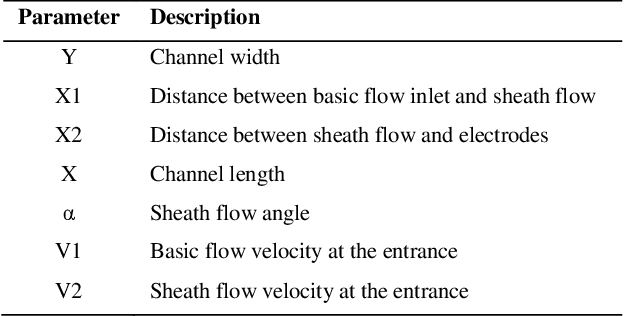Iraj Dehghan Hamani
Effect of Channel Geometry and Flow Rates in Hydrodynamic Focusing on Impedance Detection of Circulating Tumor Cells
Mar 08, 2022



Abstract:Cells, other than their biological properties, have different electric and physical properties. In an impedance cytometer, cells should pass one by one in the detection region where pairs of electrodes are located. When cells are located between electrodes, the impedance changes, and this can be indicative of the presence of a cell. This is basically because the electric properties of cells are different from the medium between the electrodes which is important in determining the impedance. One of the most important aspects which influence the performance of an impedance cytometer performance is the microchannel design. In this work, in the first step, the microchannel was designed in a way to have the best detection in the impedance cytometer. In this regard, hydrodynamic focusing was selected to focus the population of cells entering from the inlet of the main channel. To find the optimal parameters of the microchannel, different geometry for the channel itself, along with flow rates and other parameters related to sheath flow were simulated. In the next step, impedance was measured in COMSOL for White blood cells, MCF7, and MDA-MB-231 breast cancer cells. The results show that by measuring the impedance of cells using the optimized channel design, CTCs can be successfully differentiated from WBCs.
 Add to Chrome
Add to Chrome Add to Firefox
Add to Firefox Add to Edge
Add to Edge